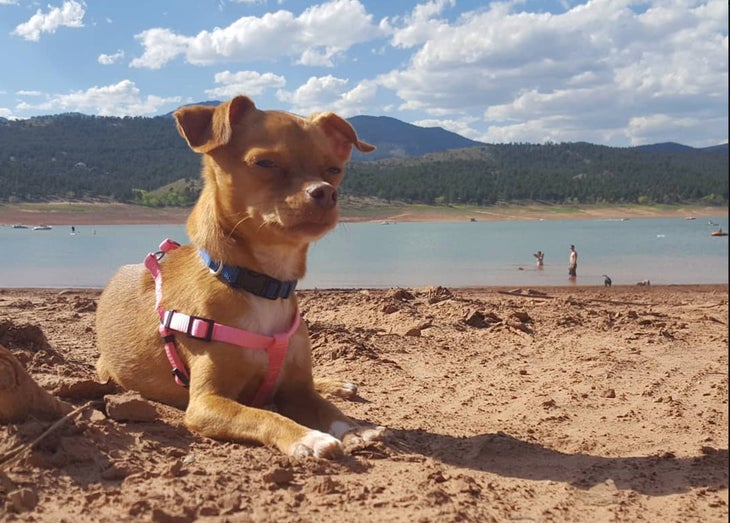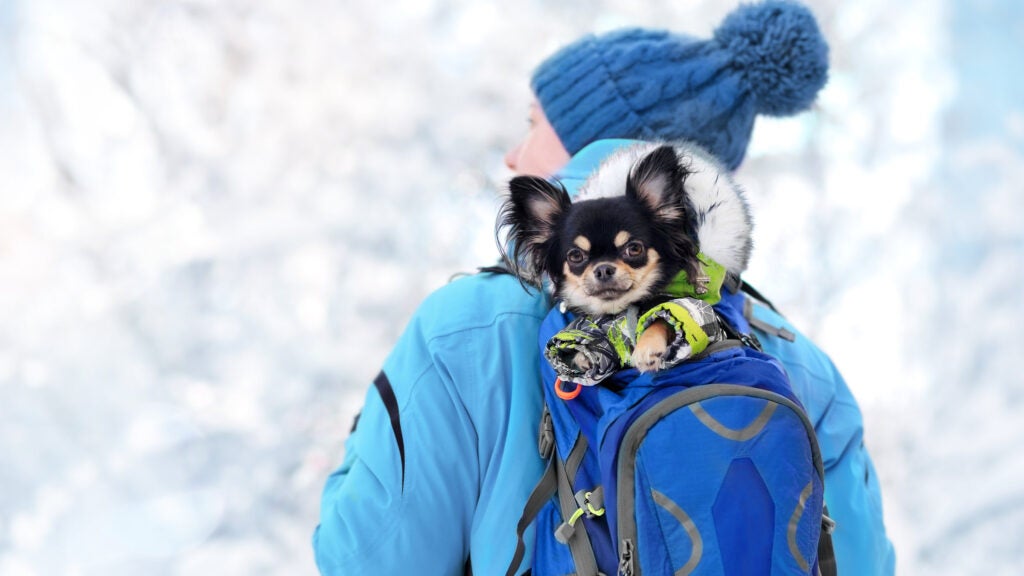Products You May Like
Heading out the door? Read this article on the new Outside+ app available now on iOS devices for members!
Download the app.
From the deck of Scott Lookout Tower, you can see the entire Halsey unit of Nebraska National Forest. Below the 50-foot-high fire spotter’s perch, the forest unfolds in a rolling tableau of ponderosa pine and cedar, split here and there with meadows and tongues of grazed-down grassland and studded with cattle tanks and windmills. I thought it was majestic, but my dog just wanted to get down.
By my feet, Hobbes poked his nose through the bars of the safety fencing and looked toward the ground, his tail between his legs. He looked up at me, licked his nose, and gave his tail a couple of hesitant wags before tucking it down again. All right, he seemed to be saying. This was fun, but don’t you think we should go back to the ground now? Looking back, I don’t blame him: Fifty feet is awfully high when you’re a 5-pound Chihuahua.
Hobbes isn’t your standard adventure dog. On our local trails in Colorado’s Front Range, he stands out among the heelers and lab mixes. While they power up the trail, pacing or dragging their owners behind them, Hobbes skitters just to keep up, his nails click-clacking on the rock, or hitches a ride in my pack. But over the years, I’ve become convinced that he and his tiny brethren are the best outdoor dogs out there.
When we first met him in the Longmont Humane Society in Colorado, Hobbes tricked us into thinking that he was a placid dog. He was calm and cool: When we took him on a stroll around the building, he walked at our pace and kept the leash slack. He accepted treats leisurely, and quietly sniffed the noses of any dogs we passed. He had us tricked: Within half an hour of arriving at our house, he was bouncing off the furniture, running laps around our living room and chasing his own tail until he fell over. Our 45-pound Norwegian elkhound’s chew toys were the size of Hobbes’s body, but he stole them anyway, dragging them into the cavernous darkness under the sofa and gnawing on them like a miniature hobgoblin. In true little-dog fashion, he made himself at home by posting up by the window and barking at every pedestrian who walked by.

When I took him on the trail for the first time to a local bouldering area, he brought that same energy with him, chasing butterflies and play-bowing to the other climbers’ dogs. If he had little-dog energy, he had little-dog nerves too, but sometimes I found his perspective helpful: As I began to ford one swollen creek, he took in our surroundings from my pack, then slowly pulled his head inside like a turtle retreating into its shell. Maybe Hobbes was onto something: I stopped and thought again about what I was doing, looking at the rapids downstream and feeling the pull of the snowmelt-laden current around my knees. I backtracked to the bank and found a different place to climb.
Sure, he had a more limited range than the huskies we shared the trail with. But it didn’t really matter: At 5 pounds, Hobbes was easily light enough to carry when he got tired or I wanted to move fast. (Paradoxically, I was more confident taking him high into the alpine than a bigger dog: If he got injured, I figured, he could always hitch a ride.) Plus, he was good motivation to shake down my pack. On longer trips, I started figuring him and the ounce or two of food he consumed into my base weight, opting for lighter quilts and trimmer tents to make room for the canine I knew I’d be schlepping.
As for company? You couldn’t ask for better than Hobbes. While friends’ pooches would follow their noses off the trail (and occasionally into the missing pet ads), Hobbes, a hiker with the soul of a lapdog, preferred to stick with the humans. (A good thing, too: A Chihuahua has a lot more natural predators than a Labrador retriever does. At 5 pounds, a determined-enough hawk could theoretically carry him off, and he’s picked and lost multiple fights with our neighborhood cats.) At night, he’d burrow his way into my sleeping bag and post up in the bend of my knee, a little snoozing, snoring, living hot water bottle.
Hikers, by and large, think they know what a good trail dog looks like: Strong, fast, enthusiastic for any adventure at any time. But I’m here to remind you of a fundamental lesson of modern backpacking: Sometimes the smallest things you carry make the biggest difference. Thanks to my portable surveillance system, I’m confident no mountain lion will ever sneak up on me. But more importantly, I’ve got a partner who always keeps an eye on me, who understands, like the best partners do, that sometimes the best things in the woods are the friends you brought with you. I try to honor that on my end too: bringing my spunky, diminutive companion with me is a reminder to tread a little more carefully, a responsibility where I find my own responsibility to myself. And if that isn’t worth adding an extra 5 pounds into my pack, I’m not sure what is.
